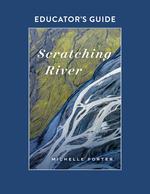“We continue and we thrive when we recover our ability to tell our stories from the land seven generations back, pointing them in the direction of the seven generations that are coming ahead of us all. We survive because we are always moving and we bring our stories along.”
-(Porter, 142)
We see, we feel, we remember. Michelle Porter’s memoir Scratching River is a testimony to survival, love, and the strength of Indigenous Peoples in Canada. Through this work she is able to braid together a multitude of topics which are vital and necessary for learners in Ontario to engage with. Most importantly, Scratching River is a reminder that Indigenous communities are alive and the culture will never die. Through her memories, Porter takes us on a journey akin to the ebb and flow of water. The journey is full of joy, wonder, disruption, beauty, pain, and what one would just call life. The journey is fragmented, as “trauma fragments memory and fragments experiences” (Porter, 140). This curriculum guide is just that: a guide. Like rivers, curriculum guides are “always asking to roam, to go looking for new places” (Porter, 11). Do not feel relegated to following the content of this guide verbatim; “to remain still … that is for the pond or the lake” (Porter, 11), and this guide is for a memoir which has the personality of a river. Scratching River aims to give learners and teachers the ability to think and feel differently about writing. Most importantly, the book uses primary sources to tell the untold stories of those who have made important contributions to Canadian history. This guide and the excerpts from Scratching River are provided to help you remember. Remember who you are. Remember that you are a human being. Remember your relationships to others and most importantly your relationship to the land, to Mother Earth. Recollect the memories. Let them flow.
Download the Educator's Guide PDF here
The Curriculum Document
This curriculum document has been created to support the text Scratching River. This document is intended for, but not limited to, use in Grade 11, Understanding Contemporary First Nations, Métis, and Inuit Voices (NBE3U). This course, as stated in the Ontario curriculum, emphasizes the development of literacy, critical thinking, and communication skills through the study of works in English by Indigenous writers (Ontario Curriculum: Native Studies, 2000.) Through the analysis of literary texts and media works, learners will develop an appreciation of the wealth and complexity of Indigenous writing. Learners will also conduct research and analyze the information gathered; write persuasive and literary essays; and analyze the relationship between media forms and audiences. An important focus will be the further development of learners’ understanding of English-language usage and conventions.
Learning Norms
Delving into first-person texts such as memoirs and biographies can bring up many different emotions and opinions; thus, we strongly suggest setting norms within the classroom that speak to respect, kindness, understanding, and empathy. Included are some guidelines around creating these norms in learning environments through the use of circles, which can help support caring and supportive learning environments that demonstrate care and love. As bell hooks writes, “when we teach with love we are better able to respond to the unique concerns of individual students, while simultaneously integrating those concerns into the classroom community. When teachers work to affirm the emotional well-being of students, we are doing the work of love” (hooks, Teaching Critical Thinking: Practice Wisdom, 160). In addition, journalling can also be considered as a way to learn, collaborate, self-reflect, and build community. Teachers could also consider the use of Embers: One Ojibway’s Meditations by Richard Wagamese as a daily reminder of the ethic of care that should live in the classroom. The teacher can read a meditation from Wagamese’s book daily at the beginning of class as well as at the end of the class. As learners begin to become familiar with this routine, the teacher can incorporate thought-provoking questions in relation to the meditation for the day to see how the mediation is landing and living in the learners.
Strands
This curriculum guide focuses on the four strands present in the Ontario Curriculum: Native Studies, 2000, as well a writing strand from the related English courses: Identity A concept created in response to the question “Who am I?” Relationships Ties that Indigenous Peoples have developed and maintained with the natural environment – the land and its life-sustaining resources. Sovereignty Based on a spiritual understanding that the Creator gives human beings responsibility for governing themselves and taking care of the land—basic to the needs of all human beings. Challenges Among the challenges faced by Indigenous Peoples today in defining their collective place in Canadian life is the need to reclaim, reassert, and further develop the distinct identities, relationships, and sovereignty they have always held. Writing Select and use appropriate writing forms for intended purposes and audiences, focusing on essays, narratives, or poems.


